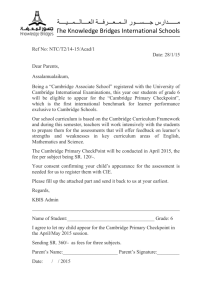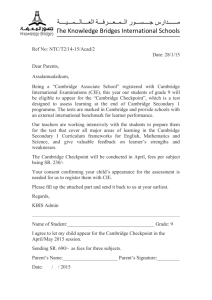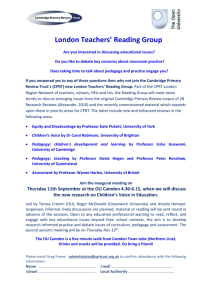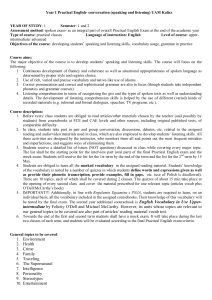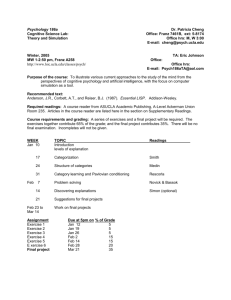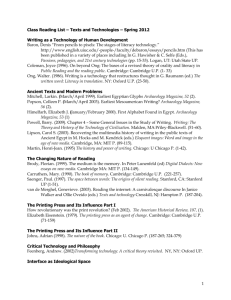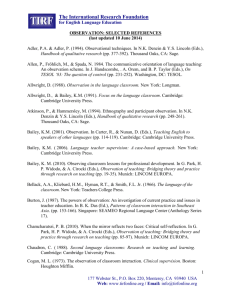Vocabulary Acquisition Theory and Practical Applications
advertisement
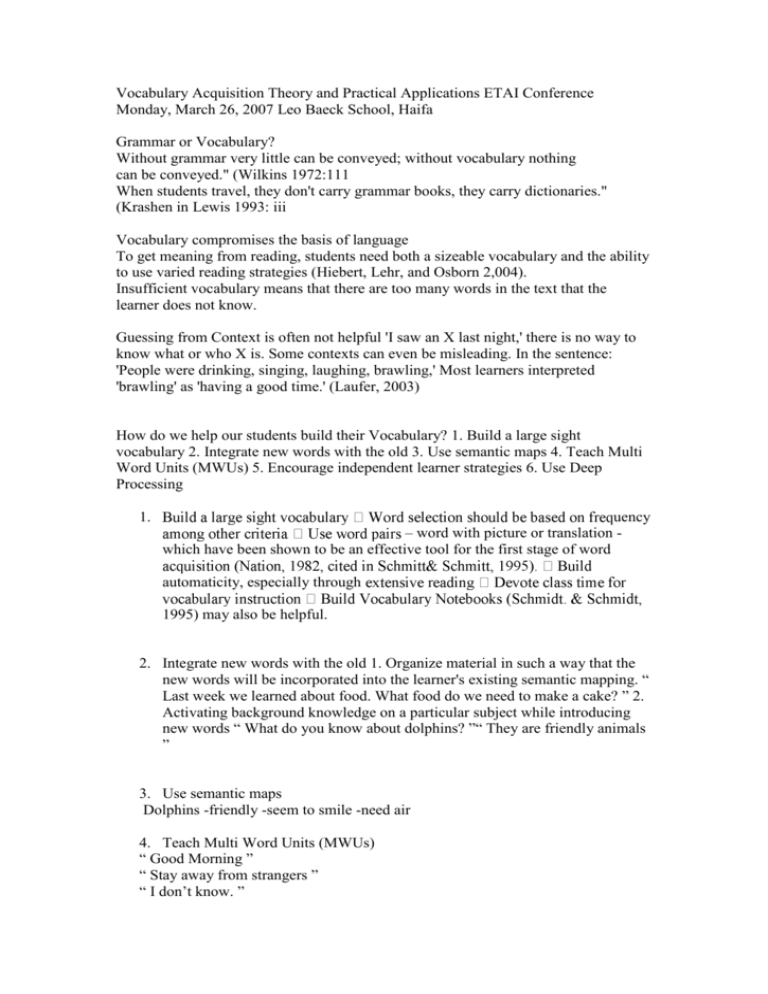
Vocabulary Acquisition Theory and Practical Applications ETAI Conference Monday, March 26, 2007 Leo Baeck School, Haifa Grammar or Vocabulary? Without grammar very little can be conveyed; without vocabulary nothing can be conveyed." (Wilkins 1972:111 When students travel, they don't carry grammar books, they carry dictionaries." (Krashen in Lewis 1993: iii Vocabulary compromises the basis of language To get meaning from reading, students need both a sizeable vocabulary and the ability to use varied reading strategies (Hiebert, Lehr, and Osborn 2,004). Insufficient vocabulary means that there are too many words in the text that the learner does not know. Guessing from Context is often not helpful 'I saw an X last night,' there is no way to know what or who X is. Some contexts can even be misleading. In the sentence: 'People were drinking, singing, laughing, brawling,' Most learners interpreted 'brawling' as 'having a good time.' (Laufer, 2003) How do we help our students build their Vocabulary? 1. Build a large sight vocabulary 2. Integrate new words with the old 3. Use semantic maps 4. Teach Multi Word Units (MWUs) 5. Encourage independent learner strategies 6. Use Deep Processing 1. uency – word with picture or translation which have been shown to be an effective tool for the first stage of word automaticity, especially through 1995) may also be helpful. 2. Integrate new words with the old 1. Organize material in such a way that the new words will be incorporated into the learner's existing semantic mapping. “ Last week we learned about food. What food do we need to make a cake? ” 2. Activating background knowledge on a particular subject while introducing new words “ What do you know about dolphins? ”“ They are friendly animals ” 3. Use semantic maps Dolphins -friendly -seem to smile -need air 4. Teach Multi Word Units (MWUs) “ Good Morning ” “ Stay away from strangers ” “ I don’t know. ” 5. Ask students to find different kinds of connections between words and then explain them “ Dangerous and cold go together because if you get too cold it is dangerous ” Use a group of words to tell friends about an experience in the past. trip, adventure, pack, chance “ On our trip we had an adventure because my Mother forgot to pack the map and we got lost. That gave us a chance to see some new places ” 5. Use Deep Processing 6Encourage independent learner strategies acquire appropriate techniques. References , Lehr, F., & Osborn, J. (2004). Focus on vocabulary, a. Honolulu: PREL. Publications. N. t & P. McCarthy (Eds.) Vocabulary: Description, acquisition, and pedagogy. Cambridge: Cambridge University Press. Cambridge University Press ocabulary into the syllabus. In N. Schmitt & P. McCarthy (Eds.) Vocabulary: Description, acquisition, and pedagogy. Cambridge: Cambridge University Press. -5 , D. (1995). Vocabulary notebooks: theoretical underpinnings and practical suggestions. ELT Journal 49, 2, 133-143. Schmitt & P. McCarthy (Eds.) Vocabulary: Description, acquisition, and pedagogy. Cambridge: Cambridge University Press.
